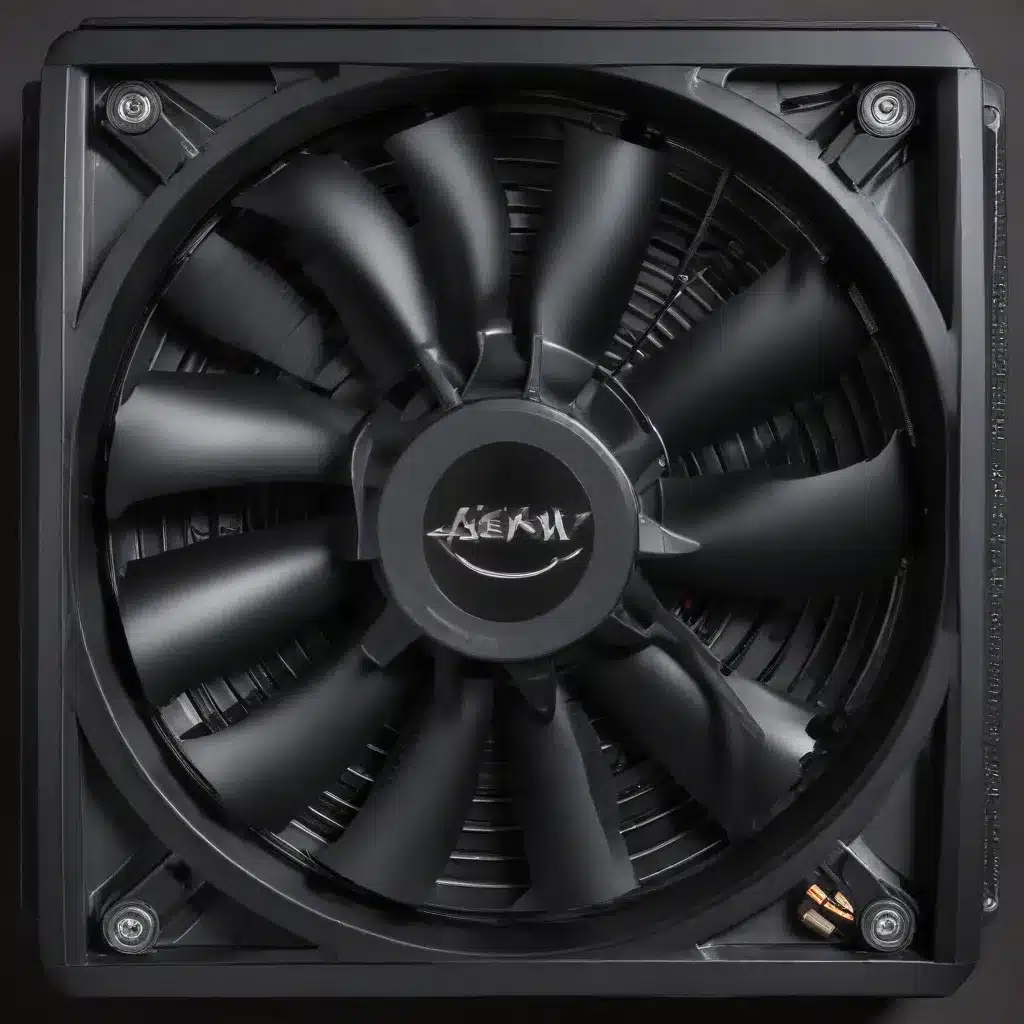As an IT enthusiast, I’ve encountered countless desktop PCs that struggle with thermal management, leading to performance throttling, excessive noise, and even premature component failures. Fortunately, there are several effective ways to upgrade your desktop cooling system and achieve better airflow and cooling efficiency. In this comprehensive guide, I’ll walk you through the key hardware components, airflow optimization techniques, and cooling system upgrades to help you keep your desktop running at its best.
Hardware Components
At the heart of any effective cooling solution are the core hardware components responsible for heat dissipation and air circulation. Let’s explore the main elements that contribute to efficient desktop cooling:
Heatsinks
The heatsink is the primary means of transferring heat away from your CPU and other critical components. Larger, more robust heatsinks with better surface area and fin design can significantly improve cooling performance. Upgrading to a high-quality aftermarket heatsink, such as those from Noctua or Be Quiet!, can make a noticeable difference in temperatures.
Fans
Fans play a crucial role in moving hot air out of the case and drawing in cool air. Investing in premium, quiet fans from brands like Noctua, Be Quiet!, or Arctic can greatly enhance your system’s airflow and reduce noise levels. Consider upgrading to larger, more powerful fans or adding additional intake and exhaust fans for better airflow.
Liquid Cooling Systems
All-in-one (AIO) liquid coolers offer exceptional cooling performance for both CPUs and high-end graphics cards. These self-contained systems typically feature a pump, radiator, and fans that work together to efficiently dissipate heat. Upgrading to a larger 240mm or 360mm radiator can provide significant temperature improvements, especially for overclocked or high-wattage components.
Air Cooling Systems
Traditional air cooling solutions, such as tower-style CPU heatsinks, can also be highly effective when paired with the right fans. Upgrading to a larger, more capable air cooler from manufacturers like Noctua, Be Quiet!, or Deepcool can provide excellent cooling without the complexity of a liquid system.
Airflow Optimization
Proper airflow management is crucial for ensuring efficient cooling in your desktop PC. Here are some key considerations for optimizing airflow:
Case Airflow Design
The case design plays a significant role in airflow. Opt for cases with ample ventilation, unobstructed intake and exhaust vents, and strategic fan placement. Avoid cases with poor airflow or restrictive front panels, as these can hinder cooling performance.
Fan Placement and Orientation
Carefully positioning your fans, both intake and exhaust, can greatly improve airflow. Ensure that your fans are oriented correctly, with intake fans drawing cool air into the case and exhaust fans expelling hot air. Experiment with different fan configurations to find the optimal setup for your system.
Vent and Duct Configurations
Utilize vents, ducts, or shrouds to direct airflow where it’s needed most. This can involve creating custom ducting or modifying existing case components to channel air efficiently over critical components, such as the CPU, GPU, and power supply.
Thermal Management
Effectively managing the heat generated by your desktop’s core components is essential for maintaining optimal performance and reliability. Let’s dive into the specific cooling requirements for the CPU, GPU, and power supply:
CPU Cooling
Processors, especially high-performance CPUs, can generate a significant amount of heat. Ensuring adequate cooling for the CPU is paramount. Monitor your CPU temperatures and consider upgrading to a more capable heatsink or liquid cooler to prevent thermal throttling and maintain stable performance.
GPU Cooling
Modern, high-end graphics cards can also produce substantial heat. Evaluate the cooling solution provided by the GPU manufacturer and explore options for aftermarket GPU coolers or even liquid cooling if your graphics card supports it.
Power Supply Cooling
Don’t neglect the cooling of your power supply unit (PSU). Ensure that your PSU has sufficient airflow and that the case design allows for proper ventilation around the power supply. Upgrading to a more efficient, better-cooled PSU can contribute to overall system cooling.
Cooling Efficiency
Maintaining a thorough understanding of your system’s thermal performance is crucial for effective cooling upgrades. Let’s explore the tools and techniques for monitoring and optimizing your desktop’s cooling efficiency:
Thermal Monitoring
Utilize system monitoring software, such as HWMonitor or AIDA64, to track the temperatures of your CPU, GPU, and other critical components. This data will help you identify hot spots and guide your cooling upgrades.
Overclocking and Cooling
If you plan to overclock your CPU or GPU, be prepared to invest in more robust cooling solutions. Overclocked components generate significantly more heat, requiring larger heatsinks, more powerful fans, or even liquid cooling systems to maintain stable performance.
Cooling Upgrades
Now that you understand the core components and principles of effective desktop cooling, let’s explore some practical upgrade options to improve your system’s airflow and thermal management:
Aftermarket Cooling Solutions
Consider upgrading to high-performance, aftermarket heatsinks or all-in-one liquid coolers from reputable brands like Noctua, Be Quiet!, or Deepcool. These solutions often provide superior cooling compared to stock or budget-oriented options.
Cooling System Installation
When installing new cooling hardware, pay close attention to the mounting procedures and cable management. Proper installation is crucial for ensuring optimal airflow and heat dissipation. Refer to manufacturer instructions and seek guidance from online resources or IT professionals if needed.
By following the strategies and upgrades outlined in this comprehensive guide, you can transform your desktop PC’s cooling performance, reducing temperatures, noise levels, and the risk of thermal-related failures. Remember, a well-cooled system not only runs more efficiently but also extends the lifespan of your valuable hardware investments.
If you’re in the Manchester area and need further assistance with your desktop cooling upgrades or any other IT-related services, don’t hesitate to reach out to the experts at IT Fix. Visit our website at [https://itfix.org.uk/computer-repair/] to learn more about our services and how we can help you keep your technology running at its best.













